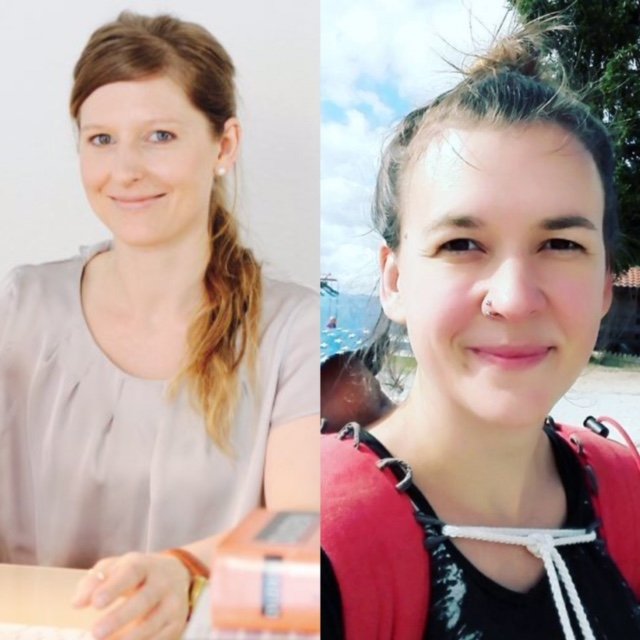This way children sleep well
When the day draws to a close and bedtime begins, many children seem more active than ever. This is how it works with bedtime.
At the end of each (exciting and eventful) day, parents or child carers have the task of putting the children to bed. But again, the little ones don’t make the slightest impression that they are even nearly tired? To ensure that bedtime does not become an event lasting several hours, you should follow these expert tips.
Prepare healthy sleep during the day
Nora Imlau, journalist, author and mother herself, recommends the following rule of thumb to all parents and child carers: "Children sleep well at night when all needs have been met during the day." going out every day, for babies as well as for older children. A full day, taking into account the child’s various needs, promotes restful sleep. This means that babysitters and parents should make sure that the balance between active and resting phases in the daily program is balanced. Rest periods do not necessarily mean sleep. Even quiet minutes with your favorite book or a couple of cuddle sessions recharge a child’s energy storage.
For the evening in particular, consider: "Bedtime starts about an hour before you go to sleep." Nora Imlau also emphasizes that, from a purely physiological point of view, every body needs a certain amount of time to shut down, and this does not necessarily have to happen in bed. Sleep medicine specialist Barbara Schneider also says: "Exciting activities before bedtime should be avoided and stressful topics discussed earlier in the day."
Make arrangements with daycare center and supervisor
Many parents are concerned when their child should sleep in the care of other people for the first time. This often begins with entry into daycare. Nora Imlau calms down: "Many parents underestimate the herd effect." In this situation, your child is not alone. It sleeps in the group. And children love to be among other children. They like to participate when everyone participates. Some parents would like the strategies used at home to be adopted by the daycare or babysitter. However, not every care facility can do this. However, you can talk to the educators about it. Children who need a lot of rest to fall asleep, for example, can be put down a little earlier so that they can sleep when the other children come into the bedroom. You can also discuss with your babysitter that your child will get the familiar cuddly toy or a milk bottle to fall asleep. In any case, all caregivers in the child’s environment should be informed about the sleeping habits and times.

Introduce evening rituals
The procedures before going to bed should always be followed so as not to confuse the child. "When it comes to the bedtime rituals, supervisors can be a little more creative," says Imlau. Children can usually differentiate between daycare and at home, between grandma and mom or dad and babysitter. Therefore, it is often better if caregivers design their own sleep ritual. When babysitters sing the same songs as parents, the child seems more like a copy of someone who is not actually there. “Children can be flexible and tie rituals to certain people,” explains Nora Imlau. Incidentally, this also applies to mothers and fathers. If mom is breastfeeding before or while falling asleep, it doesn’t mean that dad can’t help his child fall asleep. Everyone Father can have his own evening ritual, which the child finds just as beautiful.
Make sleeping in a foreign environment easier
Basically, Nora Imlau sees a trend away from the attitude that children can only come to rest at home in their bed and with their music box as a sleep aid. As long as a familiar person is present, there are rarely problems with falling asleep, for example on vacation or on the way with friends. However, children in strange surroundings need more help if they are not close to their parents. "The less familiar, the more companions need children to sleep," she summarizes. Aids such as the sling, the favorite cuddly toy or the help here Sleeping bag or the blanket that smells like home.
Create an ideal sleeping environment
What else applies at home also applies to one of course new Sleeping environment. The basis of healthy sleeping behavior for children and babies is, according to Dr. Wiater, chief physician of the children’s clinic of the Porz am Rhein hospital in Cologne, the quiet, darkened sleeping environment. Sleep specialist Barbara Schneider defines: “The bed should be a place to relax. Televisions, computers, tablets or cell phones should not be in the same room where the children sleep. ”The reasons for this are, on the one hand, that this could lead to use and, on the other hand, the blue-wave light of the display suppresses the release of the messenger substance melatonin, the is needed to fall asleep. Finally, parents should be prepared for the fact that a child needs a little time to get used to at home after a period of absence. Even in this situation, Nora Imlau supports her children "with little help", as she says: She explains e.g. when leaving the children’s room, what she is doing now and that she looks in again when she has hung up the laundry, for example. So she suggests to her children that they are not alone.
To our experts:
Nora Imlau is a specialist author and journalist for family issues and writes regularly for the magazine "Eltern". She is mother of two girls herself and also exchanges ideas with other parents and experts on her website.
Barbara Schneider works as a pediatrician in the St. Marien Children’s Hospital in Landshut. She is also a certified sleep medicine specialist and heads the Center for Neuropediatrics and Sleep Medicine.
Dr. Alfred Hubert Wiater is chief physician of the children’s clinic of the Porz am Rhein hospital in Cologne, lecturer at the University of Cologne and chairman of the German Society for Sleep Research and Sleep Medicine (DGSM).
RELATED ITEMS
-

5 Mistakes in bringing children to bed! I am a mother
Bringing children to bed: a daily challenge. There are some mistakes that we make subconsciously. Correcting them can help…
-

Bringing children to bed late has consequences! I am a mother
Go to sleep, otherwise you won’t grow anymore! This is probably one of the most used sentences with which parents try to get their children to bed….
-

Bringing children to bed – sleeping – our 1000 routes
Hello… Once again there is a contribution from our “Snapped up” section… A constantly burgeoning topic is surely “Children in bed…
-

The royal discipline of all parents: 10 ways to put children to bed, city country mom
The two of us, Nina and Laura – mothers of three children each – cannot say that we go to bed with our wild pack every night without any problems…
